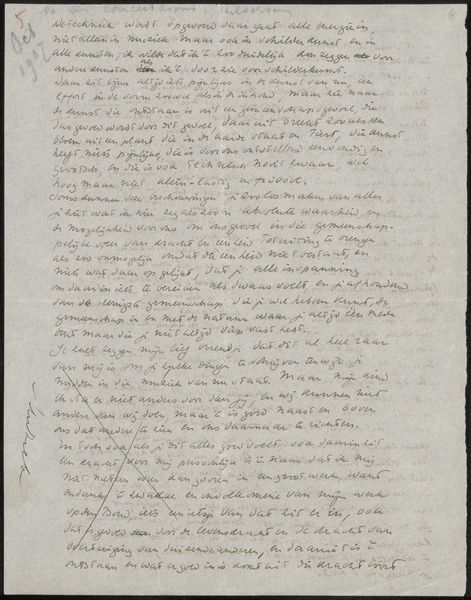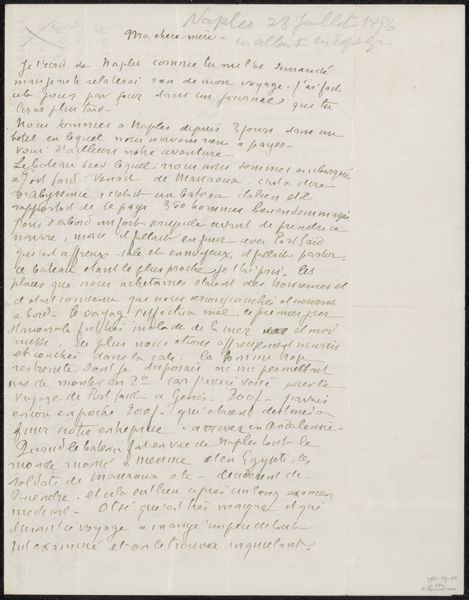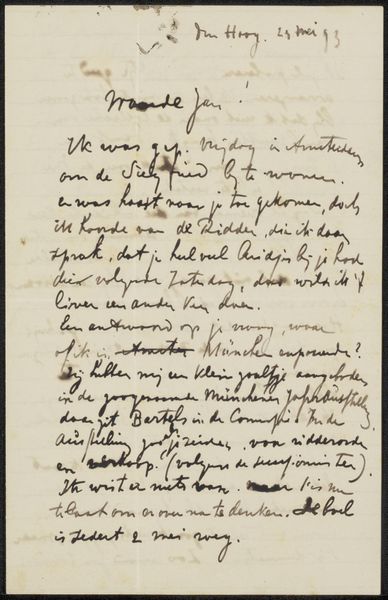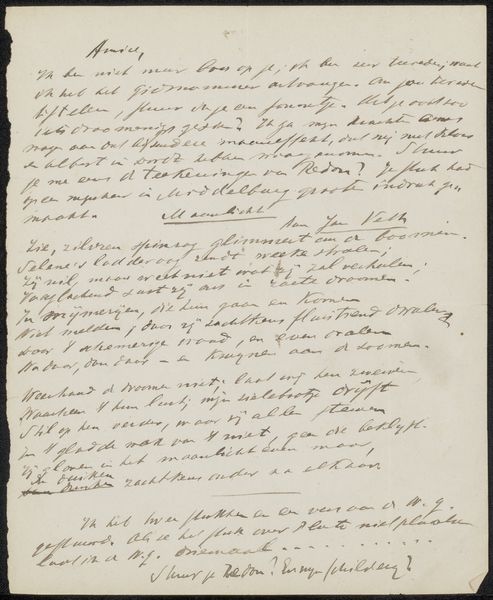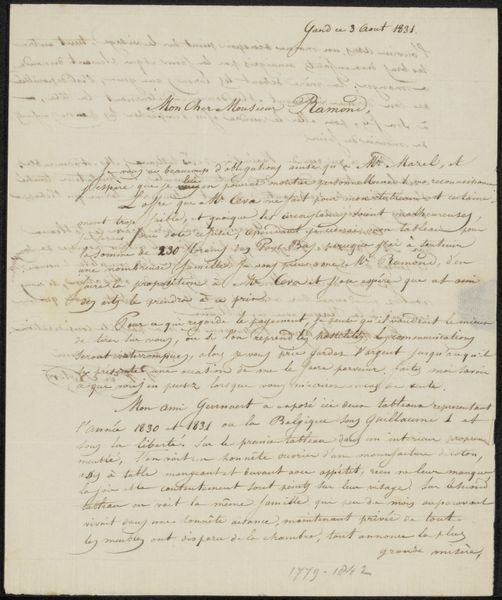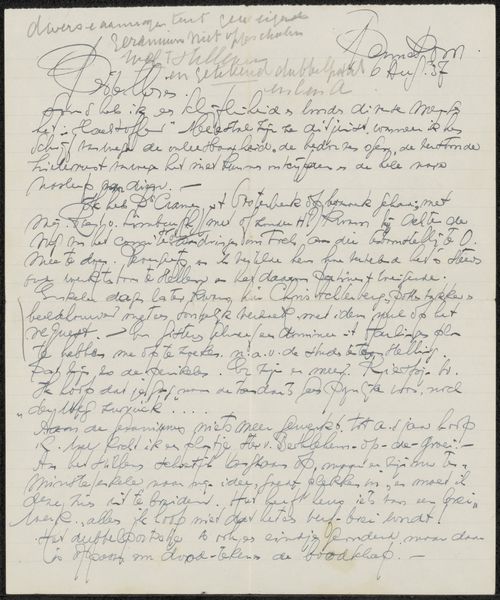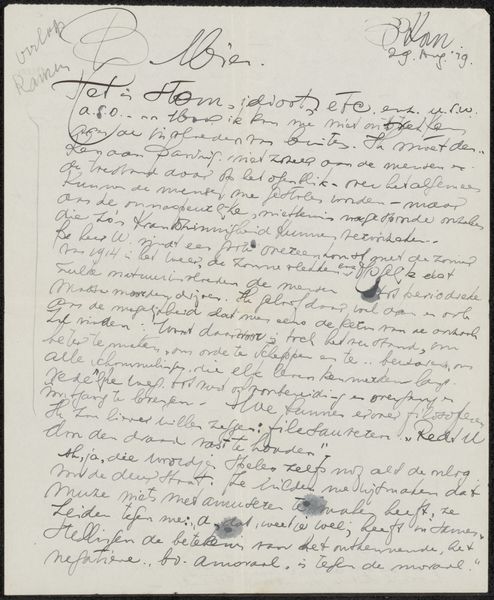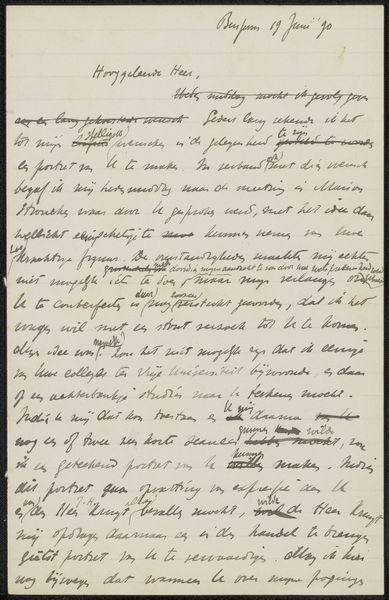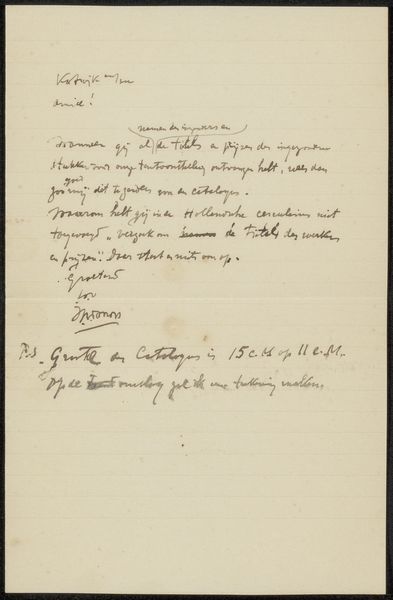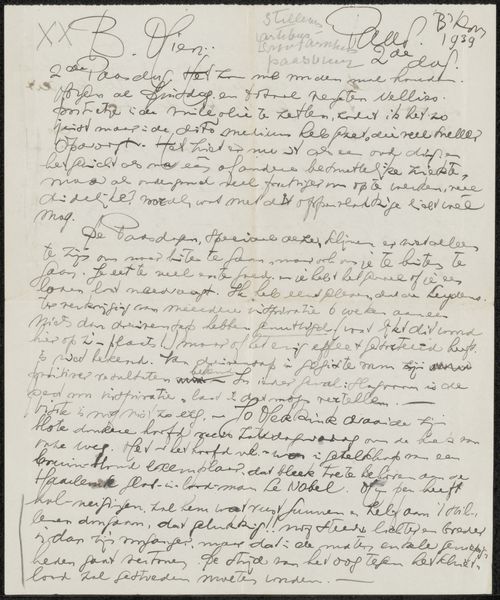
drawing, paper, ink, pen
#
drawing
#
ink paper printed
#
old engraving style
#
hand drawn type
#
paper
#
personal sketchbook
#
ink
#
hand-drawn typeface
#
pen-ink sketch
#
ink colored
#
pen work
#
sketchbook drawing
#
pen
#
post-impressionism
#
sketchbook art
Copyright: Rijks Museum: Open Domain
This letter was written in Grenada on August 22, 1896, by the artist Émile Bernard. Though unassuming, letters like this one exemplify the power of the written word to convey thoughts and feelings. Bernard composed this letter using ink on paper. The paper, likely made from pulped rags or wood fibers, provides a humble surface for the ink. The ink itself, a mixture of pigment and a binder, flows from the nib of Bernard's pen, leaving behind a trail of his thoughts. The act of writing is inherently human, a direct connection between mind and medium. In this letter, we see not only Bernard's words but also the traces of his hand, the pressure he applied to the pen, the speed at which he moved across the page. These subtle variations in line weight and form reveal something intimate about the writer. Consider the social context of letter writing in the late 19th century. Before telephones and email, letters were essential for communication across distances. They served as vital links between individuals, families, and communities. This letter, in its simplicity, reminds us of the enduring power of human connection.
Comments
No comments
Be the first to comment and join the conversation on the ultimate creative platform.
